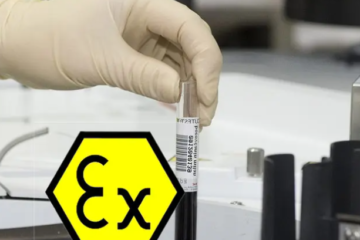Introduction
The ATEX (Atmospheres Explosibles) certification standards are crucial for ensuring the safety and compliance of equipment used in explosive atmospheres. These standards are governed by the European Union’s directive 2014/34/EU, which replaced the previous directive 94/9/EC. The transition aimed to streamline and enhance the safety requirements for manufacturers and users of such equipment. Here are some key updates in the ATEX certification standards.
1. Harmonized Standards
One of the significant updates in the ATEX directive 2014/34/EU is the alignment with harmonized European standards. These standards ensure that equipment and protective systems used in explosive atmospheres meet the essential health and safety requirements. The harmonization facilitates easier market access and consistent safety levels across Europe. Manufacturers must adhere to these harmonized standards to ensure their products are compliant and safe for use in explosive environments (DNV.com – When trust matters – DNV) (CSA Group).
2. Notified Bodies
Certification under ATEX now requires validation from Notified Bodies, which are organizations designated by EU countries to assess the conformity of certain products before being placed on the market. These bodies must comply with the updated directive, ensuring their certification processes meet the new standards. Notably, all certificates issued under the 94/9/EC directive remain valid under the new directive, simplifying the transition for manufacturers and avoiding unnecessary retesting and recertification (CSA Group).
3. Declaration of Conformity
Manufacturers are required to issue Declarations of Conformity that state compliance with both the old (94/9/EC) and new (2014/34/EU) directives during the transition period. This dual compliance ensures that products placed on the market before and after the implementation date of the new directive are appropriately certified and meet the necessary safety standards. The declaration must reflect the respective dates of application, ensuring regulatory continuity and compliance (CSA Group).
4. Technical Specifications
The technical specifications under the ATEX directive have been updated to reflect higher safety standards. These specifications include detailed requirements for equipment, protective systems, and components intended for use in explosive atmospheres. The updates are designed to address new technological developments and emerging risks, ensuring that the standards remain relevant and effective in safeguarding both equipment and personnel in hazardous environments (DNV.com – When trust matters – DNV).
5. UKCA Marking
Following Brexit, the UK has introduced the UKCA (UK Conformity Assessed) marking, which is required for products sold in Great Britain (England, Scotland, and Wales). This marking mirrors the CE marking but is specific to the UK market. Products that previously required ATEX certification for the EU market must now also comply with UKCA marking requirements to be sold in the UK. This dual requirement ensures that products meet both EU and UK safety and regulatory standards, facilitating continued market access and compliance (DNV.com – When trust matters – DNV).
Conclusion
The recent updates to ATEX certification standards underscore the importance of compliance with harmonized European standards and regulatory requirements. These changes aim to ensure the highest safety levels for equipment used in potentially explosive environments. Manufacturers and users must stay informed about these updates to maintain compliance and ensure the safety of their operations. For more detailed information on these updates, refer to official documents and guidelines from the European Commission and certification bodies like DNV and CSA Group.
Atex equipment
Find Atex equipment and products online.

